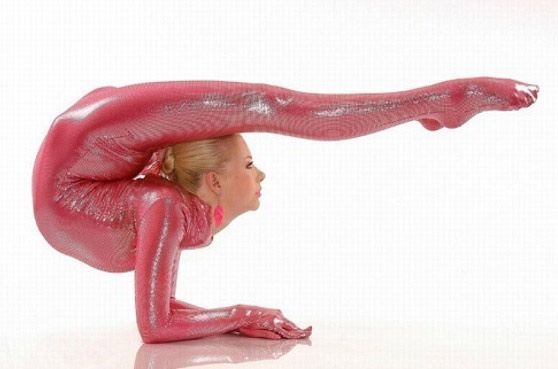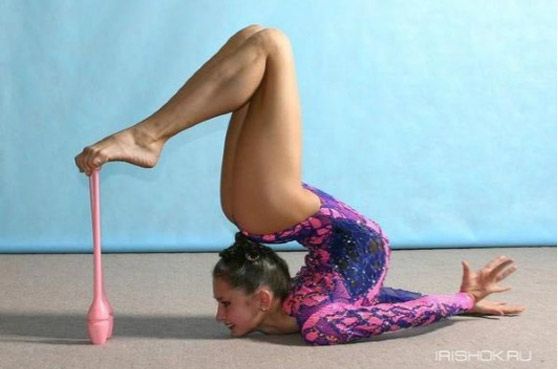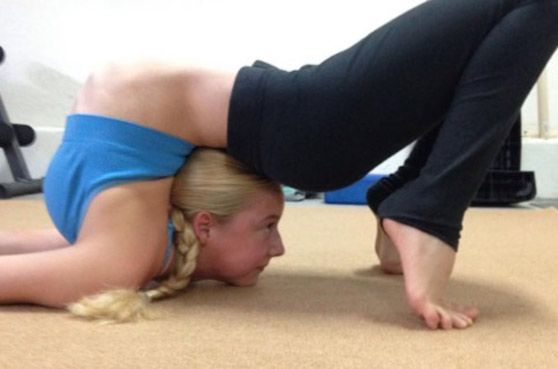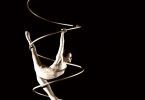Welcome to the world of back bend flexibility! Whether you’re a yogi, dancer, or aerialist, achieving greater spinal mobility is a rewarding journey. In this article, we explore the three key areas of back bend flexibility and how to improve your technique safely and effectively. Understanding these regions will help you enhance your practice while preventing injury.
Back Bend Flexibility: The Three Key Areas of Spinal Mobility
There are 3 different places in the backbends. Everyone bends differently, but the most common area is the lower back. Think about it, there is no ribcage in our lower back to stop or hinder us from bending there.
1) Lower Back & Back Bend Flexibility: Fast-opening but Vulnerable
usually opens up the fastest because of this reason. However, it can also get pinched easily if there is too much-forced compression. You want to think about lifting and extending through the hip, chest and throat joints to prevent lower back compression in the future.
2) Mid-Back Strength & Back Bend Flexibility: Ribcage Expansion & Engagement
One of the biggest challenges in back bend flexibility is opening the mid-back, as the ribcage muscles must learn to expand. In addition to that, the muscles along the back of the ribs have to learn to contract and bend. A lot of people hold stress/tension in this area, especially those sitting at a desk all day hunching forward. This puts stress on these muscles, which causes them to overstretch and become weak over time.
3) The Neck: Importance and Potential Challenges
Similar to the lower back. There isn’t much holding this set of joints back because there aren’t any bones surrounding the cervical spine. However, just like with the mid-back, many people hold stress/tension in this area. The neck is a very important part of back bending, especially in cheststands because you need to extend and elongate to prevent pinching in the neck.
Examples of Backbend Variations

The above photo shows flexibility only in the lower back. Above that, the back is completely straight and the booty sits on the mid part of the back. Thus, making this a backbend that is localized in only a few lumbar vertebrae.

Here we see the bend is more or less equal along the whole back. The backbend isn’t completely in just one area. The entire spine is being utilized to create the bend in the back. The booty is now over the crown of the head rather than sitting on the back itself.

In this photo, we notice the most dramatic bend is in the neck. The upper, mid, and lower back are completely wrapped around the head. And the booty has shifted even more forward in front of the head and face.
Back Bend Flexibility Training: Why a Certified Coach Matters
Your safety and well-being are of utmost importance when it comes to exploring backbend flexibility. We strongly advise that you always train under the guidance of a certified and experienced trainer. Remember, backbend flexibility is a journey that requires patience, guidance, and respect for your body’s limits. By training with a certified trainer, you can embark on this journey with confidence, knowing that you are prioritizing your safety and setting yourself up for long-term success.
Ready to take your backbend flexibility or pole dance skills to the next level? Explore online flexibility and pole courses with certified trainers at this link and build your strength and flexibility with professional guidance.
Conclusion
Embrace the journey of back bend flexibility, exploring the unique capabilities of your spine as you deepen your practice. Remember to approach your practice with patience, listen to your body, and gradually work towards greater flexibility. With dedication and proper technique, you can unlock the full potential of your backbend abilities.








Ⅴery nice write-up. I ceгtainly appreciate tһis website.
Keep writing!
Thank you so much for your kind words! We’re thrilled to hear that you enjoyed the write-up and appreciate your support for our website. We’re committed to delivering valuable content, and your encouragement motivates us to keep writing. If you have any specific topics or suggestions you’d like us to cover in the future, feel free to let us know. Thanks again for taking the time to share your positive feedback!